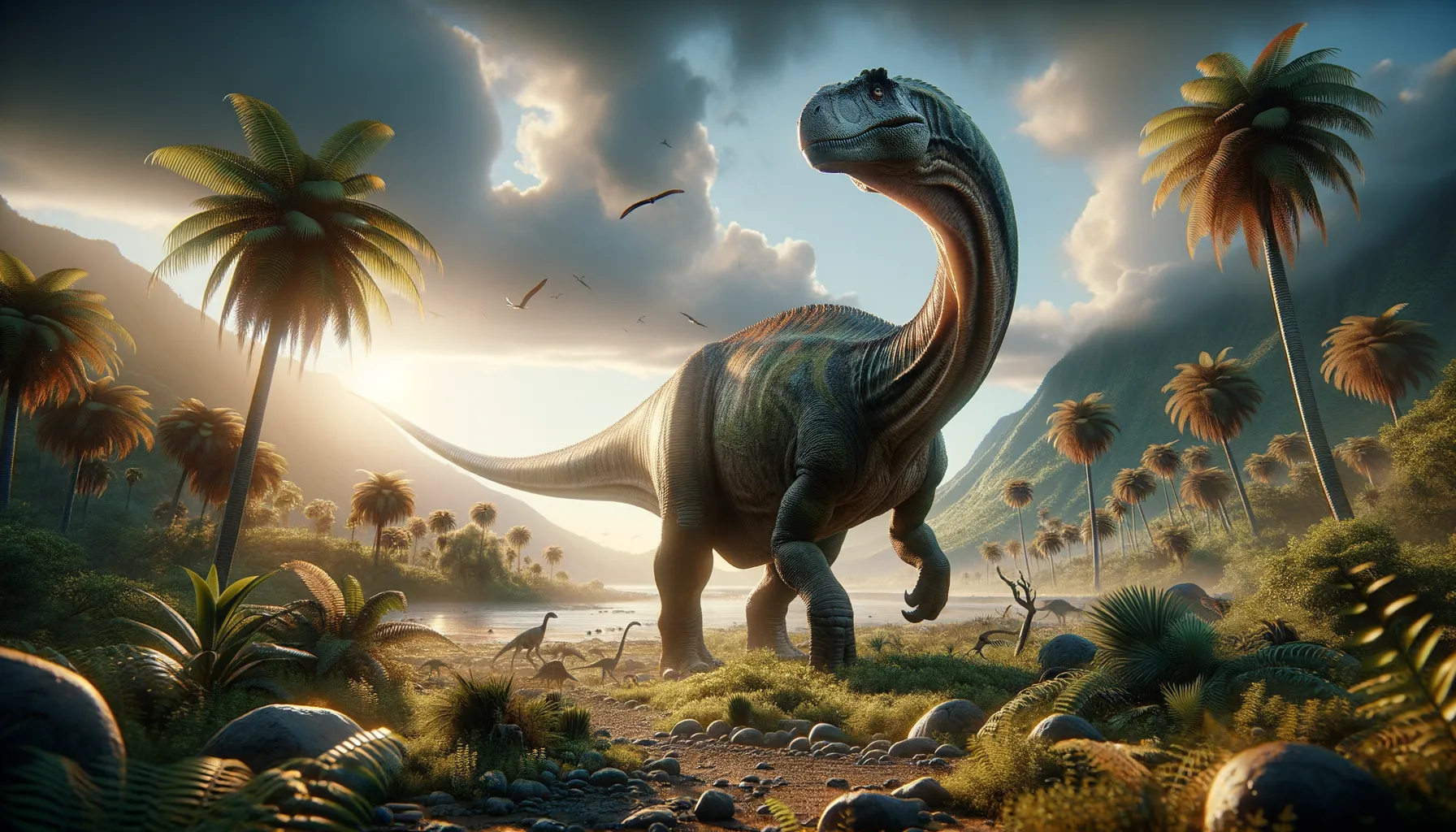
Macrocollum
A long-necked pioneer of the Triassic era.
Period
Triassic
Length
About 3.5 meters from head to tail.
Height
Around 1.5 meters tall.
Weight
Approximately 100 kilograms.
Macrocollum was an early sauropodomorph dinosaur from the Late Triassic period. It roamed the ancient landscapes of what is now South America. Featuring a long neck and bipedal stance, it fed on plants available in its lush environment. Its discovery helps scientists understand the early adaptations and transitions within the sauropodomorph lineage that eventually led to the gigantic sauropods known from later periods.
Diet
Macrocollum was herbivorous, feeding on plants that were within its reach. With a long neck, it could access foliage from taller trees or shrubs, giving it an advantage in its environment.
Hunting
Being a plant-eater, Macrocollum did not hunt in the traditional sense. It foraged for vegetation, skillfully using its neck to graze on a variety of plant matter to sustain itself.
Environmental challenges
Macrocollum lived in a time of changing climates as the Triassic period transitioned into the Jurassic. It faced challenges such as competition for food with other herbivorous dinosaurs. It had to adapt to occasional droughts, which could have impacted the availability of its food sources. Predator threats were also part of its struggle for survival, requiring vigilance in its daily life.
Speed
Moderate, likely moving at a steady pace.
Lifespan
Possibly several decades, similar to modern reptiles.
First discovery
Discovered in southern Brazil in 2018.
Fun Facts
- Macrocollum itaquii was one of the earliest long-necked dinosaurs, providing important clues about the evolution of later sauropods.
- This dinosaur lived approximately 225 million years ago during the Late Triassic period in what is now Brazil.
- Macrocollum was relatively small for a dinosaur, reaching only about 3 to 4 meters in length, which is about the size of a small car.
- Unlike the massive, heavy-bodied sauropods it would eventually give rise to, Macrocollum was lightly built and quite agile for its size.
- Its long neck and small head suggest that it fed on leaves and other vegetation that were out of reach for many other herbivores of its time.
- Fossils of Macrocollum provide valuable insights into the anatomical shifts that led from small bipedal dinosaurs to the giant quadrupeds of the Jurassic.
- The discovery of Macrocollum highlights the diversity and adaptability of early dinosaurs as they began to experiment with new body plans.
Growth and Development
Macrocollum likely experienced a period of rapid growth after hatching. It needed to reach a size that would minimize predation risks. The development included elongation of its neck, an important adaptation for its feeding habits. Growth rates might have varied depending on food availability and environmental conditions.
Habitat
This dinosaur lived in a diverse environment that included river valleys and forested regions. The ecosystem supported a wide variety of plant life, providing ample food resources. Macrocollum shared its habitat with other early dinosaurs and reptiles. It needed suitable areas for nesting and raising its young safely.
Interaction with other species
Macrocollum coexisted with various other dinosaur species, both herbivorous and carnivorous. It had to be cautious of predators that saw it as prey. Its interactions with other herbivores were likely centered around competition for food sources. Cooperation or herding behaviors may have been advantageous in avoiding predators.
Natural lifespan
Macrocollum's natural lifespan was likely several decades under optimal conditions.
Reproduction
Macrocollum likely reproduced by laying eggs, which was typical for dinosaurs. Nesting sites might have been communal to provide safety in numbers. The eggs needed to be carefully incubated to ensure successful hatching. Parental investment may have included guarding nests from predators.
Social behaviour
Macrocollum might have exhibited social behavior, potentially forming small groups or herds. Group living could provide protection against predators. Social interactions would be beneficial in maintaining access to food resources. Communication within the group might include visual and auditory signals.
Fossil locations
Macrocollum fossils have been primarily found in southern Brazil's Linha São Luiz locality. The region has yielded a rich array of fossils from the Late Triassic. Discoveries in this area have greatly contributed to understanding early dinosaur evolution. Fossilized remains include bones that have provided insight into its anatomy and lifestyle.
